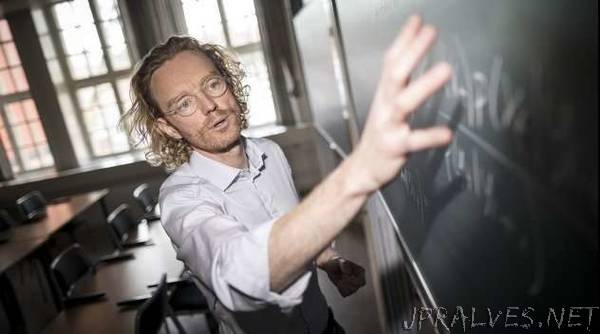
“Behind every self-driving car, self-learning robot and smart building hides a variety of advanced algorithms that control learning and decision making. Some of the mathematical models that make up the backbone of automated systems are currently under construction by researchers from Uppsala University and KTH.
It has been almost a year since IT researchers at Uppsala University and KTH received 24 million kronor from the Swedish Research Council for the formation of the research environment “NewLEADS”. However, preparations for the project “New approaches for model-based learning of dynamical systems” were initiated already in January 2016. Collaboration between the research groups goes even further back, says Thomas Schön, Professor of Automatic Control at Uppsala University.
“We know each other well from before and have co-written research papers. To be able to establish a research environment with such talented colleagues at KTH is great fun. Together we can do amazing things that would be impossible for only one individual to pull off.”
When it comes to dividing the work between the two universities, it mainly comes down to each research group’s expertise.
“Uppsala’s focus in this project is to build mathematical models of dynamic systems that can identify and deal with uncertainty. No matter how talented we are, models still never align perfectly with real life - we can never cover all possible aspects. However, we can construct mathematical manoeuvres that help machines to make independent and reliable decisions,” says Thomas Schön.
Safer decision-making system
The challenge of constructing algorithms for dynamic systems is in the nature of those systems: they are in constant change. Traffic cameras, radar, and inertial sensors are some of the devices delivering the information the algorithm requires. Now another extremely dynamic system is becoming more central to Thomas Schön’s and his colleagues’ projects: the human body.
“We are increasing our work in the medical field and looking in particular at automated diagnosis as a tool for physicians. Today, Swedish x-rays are sent for examination by physicians in reverse time zones such as Australia. They then e-mail their reports to their colleagues in Sweden who can study them when getting in to the hospital in the morning. I believe that kind of review will to some extent be automated even if significant challenges still remain,” says Thomas Schön.
The uncertainty inherent in the mathematical models are no different from the ubiquitous uncertainty in today’s diagnoses, he says. Physicians cannot possibly assimilate all new medical information. There, automated diagnosis constitutes support and contributes to new questions. In addition, a solution based on machine learning is able to quantify the uncertainty in the prediction, which according to Thomas Schön also presents the physician with important information before making the final decision.
“All the data coming in results in a huge bank of knowledge for everybody to use. This is the great opportunity and the great challenge.”
Breadth of qualifications
According to Thomas Schön, NewLEADS focuses mainly on basic research. At the same time, they maintain exchanges with projects of a more applied nature. Uppsala’s research group also includes Fredrik Lindsten, Peter Stoica and Dave Zachariah with qualifications in automatic control, signal processing and machine learning.
The KTH researchers have a similar background but with a slightly different profile. One focus is to design experiments that extract as much information as possible from a particular system that is to be modelled, explains Håkan Hjalmarsson, Professor of Automatic Control at KTH. His group includes Cristian Rojas as well as Bo Wahlberg, initiator of NewLEADS. In addition, there are some ten doctoral students and post-docs involved in NewLEADS at both universities. Several PhD courses are in the works.
There are very good conditions for the new research environment, according to Håkan Hjalmarsson.
“I hope of course that KTH and UU will be able to build a good theoretical base that is easy to implement in various applications of dynamic systems such as smart climate control of buildings and self-driving vehicles, and that we get to see them put to good use,” he says, and adds:
“In six years, we probably won’t have achieved our every goal, but we stand a good chance of having come a long way. We are a fantastic team.””
